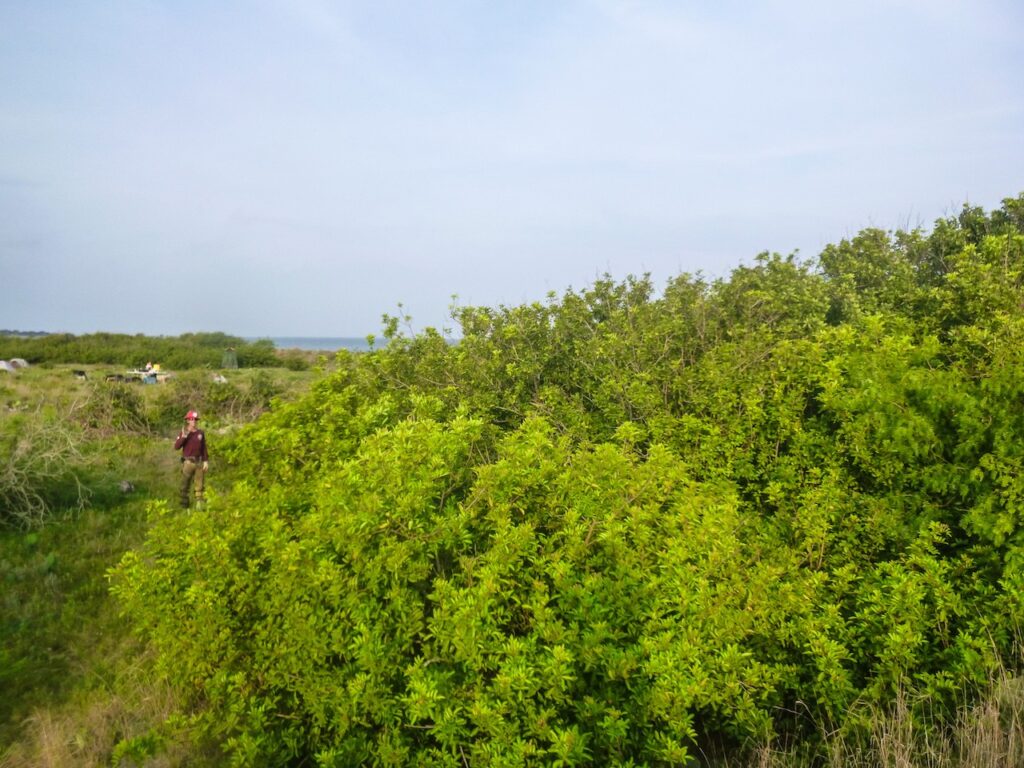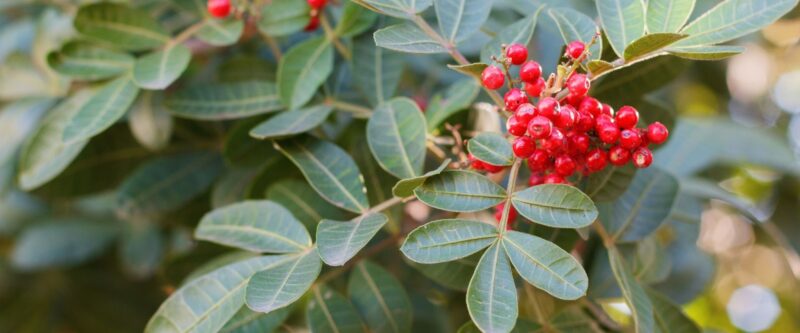Johnny Butterflyseed’s Comprehensive Plan to Restore Florida’s Ecosystems
The Brazilian Peppertree (Schinus terebinthifolia) is one of the most invasive species threatening Florida’s ecosystems. Its aggressive growth displaces native plants, disrupts wildlife habitats, and alters the natural landscape. Addressing this issue requires a comprehensive and sustainable approach that not only eradicates this invasive species but also restores the native flora and fauna that have been displaced.
Johnny Butterflyseed’s Florida Brazilian Peppertree Eradication Program proposes a strategic, community-driven, and ecologically sound solution to this problem, beginning with a pilot program on Florida’s Space Coast—a region particularly affected by the invasive species. This program aims to involve citizens, leverage ecological expertise, and create sustainable job opportunities, all while ensuring that Florida’s unique biodiversity is preserved and restored.
Program Overview
The Florida Brazilian Peppertree Eradication Program is designed to:
- Empower citizens to participate in the removal of Brazilian Peppertrees through a structured and incentivized permit system.
- Employ ecological technicians to oversee the process, ensure proper removal techniques, and manage the ongoing restoration of native ecosystems.
- Promote environmental stewardship through education, community involvement, and the replanting of native species in areas cleared of Brazilian Peppertrees.
Pilot Program on Florida’s Space Coast
The Space Coast, with its particularly heavy infestation of Brazilian Peppertrees, will serve as the launch site for this pilot program. This region is an ideal starting point due to its ecological significance and the urgent need for invasive species management.

Citizen Participation and Permitting Process
To engage the community and ensure effective removal, the program introduces a permitting system for citizens:
- Permit Requirement: Citizens who wish to participate must obtain a permit, which includes completing a brief training on proper identification and removal techniques for Brazilian Peppertrees. This training ensures that participants can distinguish Brazilian Peppertrees from similar native species, such as Dahoon Holly.
- Identification Verification: Before any removal, permit holders must submit photos and location details of the targeted trees for verification by ecological technicians. This step is crucial to prevent the accidental harvesting of native plants.
- Removal and Herbicide Treatment: Once verified, participants are authorized to remove the tree and treat the root ball with an approved herbicide to prevent regrowth. Payment is issued only after technicians confirm that the correct procedures have been followed.
Compensation and Economic Incentives
To incentivize participation, the program offers fair compensation:
- Payment Structure: Participants are paid $20 per cubic yard or 600 pounds of Brazilian Peppertree biomass delivered to designated collection points. A typical pickup truck, capable of carrying 2-3 cubic yards, could earn participants $40 to $60 per load.
- Adjusted Permit Numbers: Like hunting regulations, the number of permits issued each year will be adjusted based on the success of eradication efforts, ensuring sustainable participation and effective management.
Role of Ecological Technicians
Ecological technicians are the backbone of the program, ensuring its integrity and success:
- Verification and Herbicide Application: Technicians are responsible for verifying the species identification, applying herbicide to prevent regrowth, and documenting the process through GPS coordinates and photos.
- Ongoing Maintenance: After the initial eradication, technicians will transition to roles focused on monitoring the sites for regrowth, applying additional treatments as necessary, and overseeing the restoration of native ecosystems.
- Permanent Employment: To sustain these efforts, technicians will be retained as permanent employees, providing long-term job stability and continuity in the program’s goals.
Restoration and Management
A key component of the program is the restoration of ecosystems once Brazilian Peppertrees are removed:
- Replanting Native Species: Areas cleared of Brazilian Peppertrees will be replanted with native species, such as Dahoon Holly, to restore the natural landscape and support local wildlife.
- Subsidized Native Plants: The program will provide subsidized or free native plants to permit holders who commit to replanting their cleared sites. This not only restores the environment but also fosters a sense of stewardship among participants.
Education and Public Awareness
To ensure the success and sustainability of the program, public education is paramount:
- Community Involvement: The program will engage local communities through workshops, educational materials, and public campaigns, emphasizing the importance of removing invasive species and restoring native ecosystems.
- Reporting and Feedback: Citizens will be encouraged to report any sightings of Brazilian Peppertrees, especially in remote areas, and provide feedback on the program’s effectiveness. This collaborative approach will help refine and improve the program over time.
Scalability and Long-Term Vision
The pilot program on the Space Coast will serve as a model for expansion across Florida:
- Scalable Workforce: As the program expands, the number of ecological technicians and permit holders can be adjusted based on regional needs and the severity of infestation.
- Adaptive Management: Continuous monitoring and data collection will allow the program to adapt to changing conditions, ensuring its long-term success.
Conclusion
Johnny Butterflyseed’s Florida Brazilian Peppertree Eradication Program represents a comprehensive, community-driven approach to one of Florida’s most pressing environmental challenges. By combining citizen participation, ecological expertise, and a commitment to restoration, this program offers a viable solution for eradicating Brazilian Peppertrees while promoting economic opportunities and environmental stewardship.
This non-partisan initiative seeks the support of Florida lawmakers to launch the pilot program on the Space Coast and, ultimately, expand statewide. Together, we can protect Florida’s natural heritage and ensure a thriving future for its ecosystems… one day at a time!

The Adventures of Johnny Butterflyseed – Author Signed First Edition Children’s Book
Save the monarchs!
Johnny Butterflyseed and his fairy friend, Raven Silverwing, embark on a mission to save the rapidly disappearing butterflies. They enlist the help of Queen Venus Goldwing and her kingdom of monarchs to educate and inspire kids to become butterfly farmers. At first, Johnny faces his own internal struggle with self-doubt and fear in his ability to make a difference, but then soon develops a mindset that allows him to not only get started, but also make progress one day at a time. Through challenge after challenge, Johnny learns that he is not alone in his mission and that there are many people who want to help. Together, Johnny, Raven, and Queen Venus educate thousands of children on becoming butterfly farmers.
